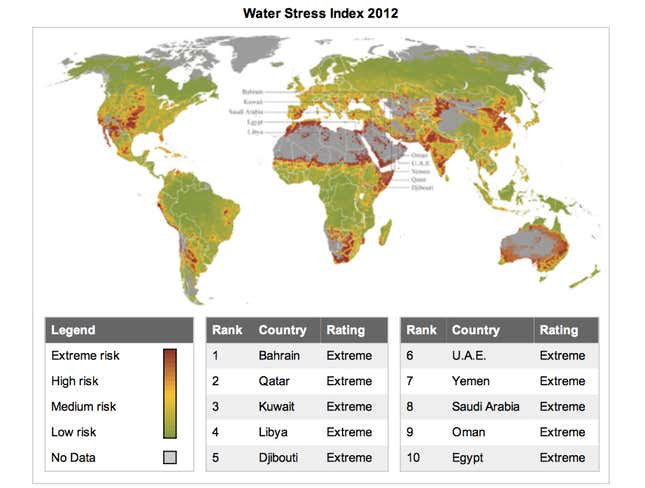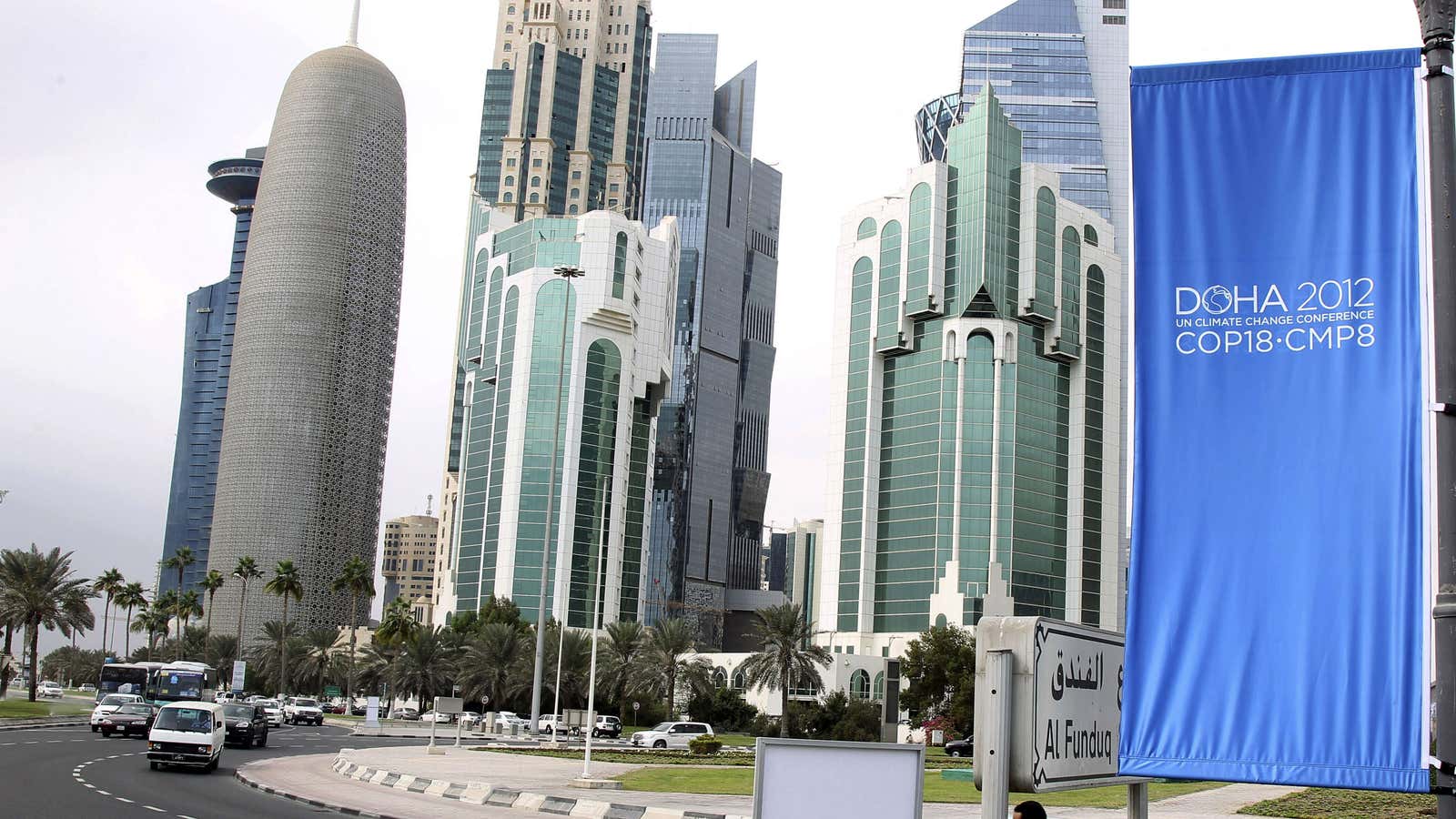If the delegates at this week’s Doha climate confab want to see why their meeting is so important, they won’t have to look very far. In Doha, Qatar, host of the 18th UN Climate Change Conference, the effects of climate change are already keenly felt.
The tiny emirate is brutally hot in summer—often topping 40 degrees Celsius (104 degrees Fahrenheit), and its barren desert land is prone to haze, dust and stand storms. One so-called “super sandstorm“ in March 2011 reached Qatar after covering all of Iraq, engulfing Kuwait and Saudi Arabia, and also Bahrain.
Scientists say that Qatar and the entire energy-producing Middle East region are severely vulnerable (pdf) to the effects of climate change and are going to get a whole lot hotter. Temperatures are expected to rise by as much as 2% by 2050, and by as much as 5% by century’s end, exceeding a 4% estimated rise in other parts of the world. At the same time, precipitation is expected to fall by 20%, a staggering decline in a region where water is the scarcest on earth. The result: hotter summers and less precipitation, leading to severe water and food shortages—ultimately increasing civil strife in an already volatile part of the world.
Sea levels have already been rising in the Middle East, while less precipitation has increased the frequency of droughts, from one every 10 years at the beginning of this century to roughly half a dozen each decade now. Qatar ranks second in the world on a listing of 168 countries whose water supplies are the most threatened from unsustainable domestic, agricultural, and industrial demands.

Big investments in water desalination facilities have helped offset water shortages in Qatar, but they can’t solve everything. Agriculture there is dependent on irrigation from pumped groundwater and it’s estimated that, given the demand, the country’s aquifers will be depleted within 30 years.
The combination of water scarcity, poor soil, a hyper-arid climate, and the projected impact of climate change mean that farmers can’t meet the demands of the current and growing population (it increased by nearly 10% between 2007-2011). Most of Qatar’s food is imported, and dependence on exports is rising.
Food security is a huge concern in the Middle East. A 2009 analysis (pdf) of the impact of climate change suggested that crop yields in the region would decline by as much as 30% for rice, about 47% for maize, and 20% for wheat. As a result, the daily calorie availability per person in the region in 2050 is projected to be 2,500, the equivalent of up to 500 calories less per person per day—leading to more than two million malnourished children in 2050, double what it would be without climate change.
Energy-rich Qatar is in many ways less susceptible to problems than some of its poorer Middle Eastern neighbors. Its citizens are the wealthiest per capita in the world. They can afford air-conditioned homes and cars, and to build bigger desalinization facilities and buy food abroad. But so far money hasn’t been able to prevent problems such as diminished bio-diversity and increasing health issues including respiratory illnesses related to dust storms, sandstorms, and greenhouse gas emissions.
Of course, some delegates may think that Qatar has only itself to blame. The country, greatly dependent on the production and sale of fossil fuels, has the largest ecological footprint per capita of any nation, according to a May study (pdf) by the WWF conservation group. As a developing nation, Qatar is not required to set fixed emission-reduction targets, nor has it made any voluntary pledges either.
